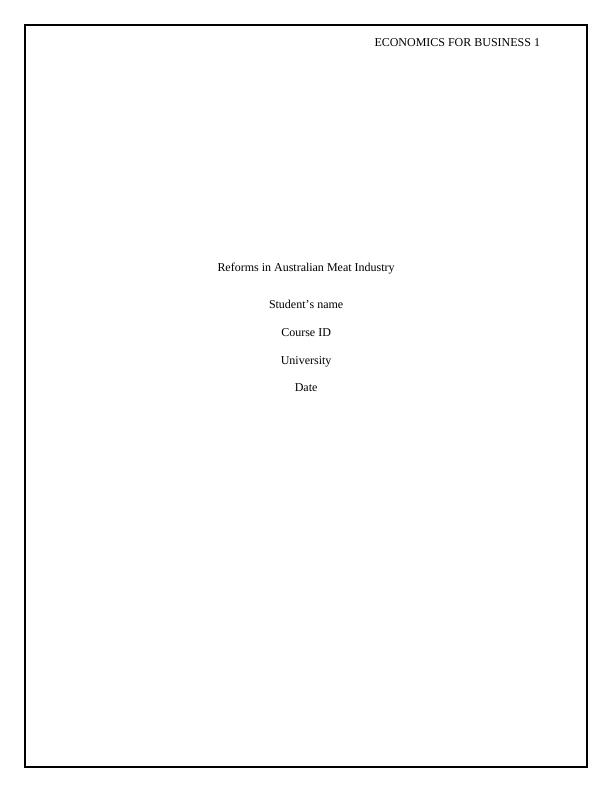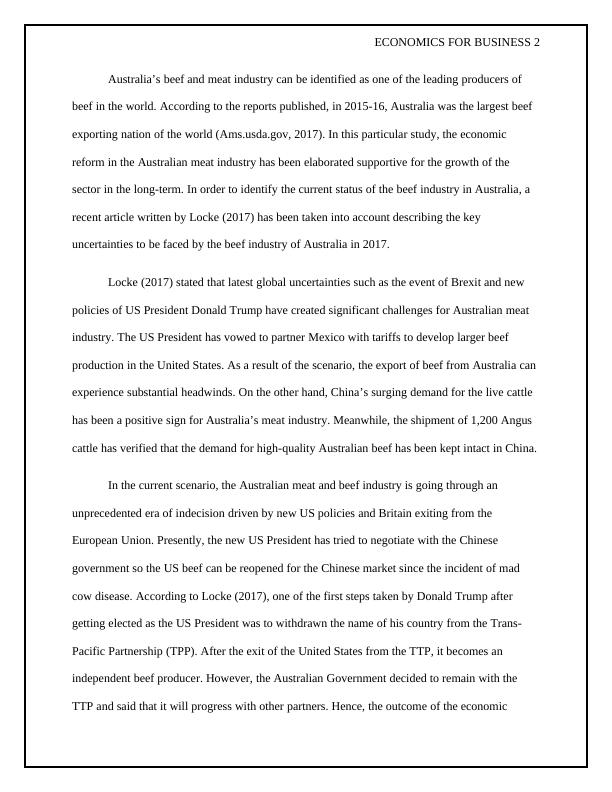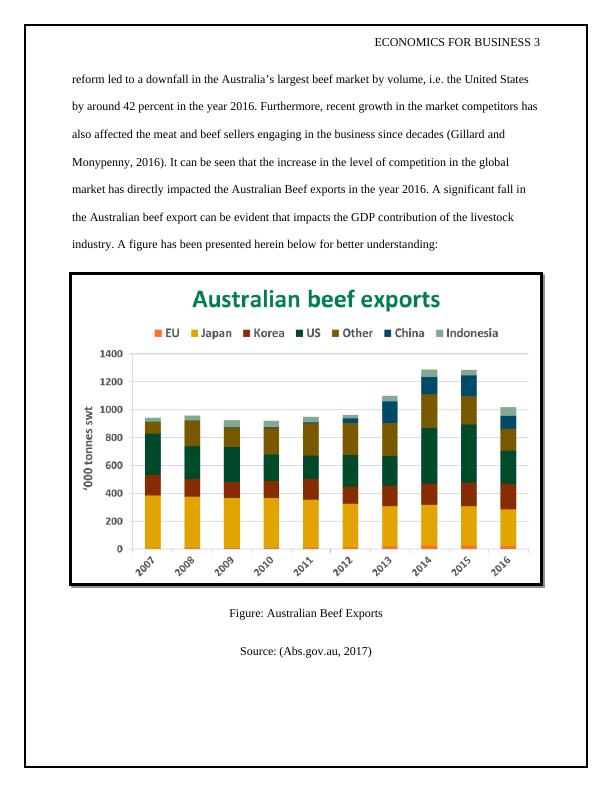HI5003 | Economics for Business - Reforms in Australian Meat Industry
7 Pages1438 Words40 Views
University of Newcastle
Economics and Business Management (LN12)
Added on 2020-03-04
About This Document
LN12, we will discuss Reforms in the Australian Meat Industry. Australia is one of the world's leading producers of beef. The assignment includes a graph that depicts the rise in beef exports from 2007 to 2016, as well as a list of the top ten global beef exporters.
HI5003 | Economics for Business - Reforms in Australian Meat Industry
University of Newcastle
Economics and Business Management (LN12)
Added on 2020-03-04
ShareRelated Documents
End of preview
Want to access all the pages? Upload your documents or become a member.
Impact of President Donald Trump's Protectionist Policies on US-China Trade Relations
|6
|1364
|279
Trump's Nationalistic Philosophy
|5
|771
|441
Will the Australian economy benefit from President Trump's protectionist policies?
|7
|1823
|290
Impact of Trump's Economic Policy on Foreign Economies
|13
|1871
|20
Impact of President Trump's Economic Policy on Foreign Economies
|5
|652
|27
Impact of Trump's Economic Policies on UK and China
|13
|2291
|23



